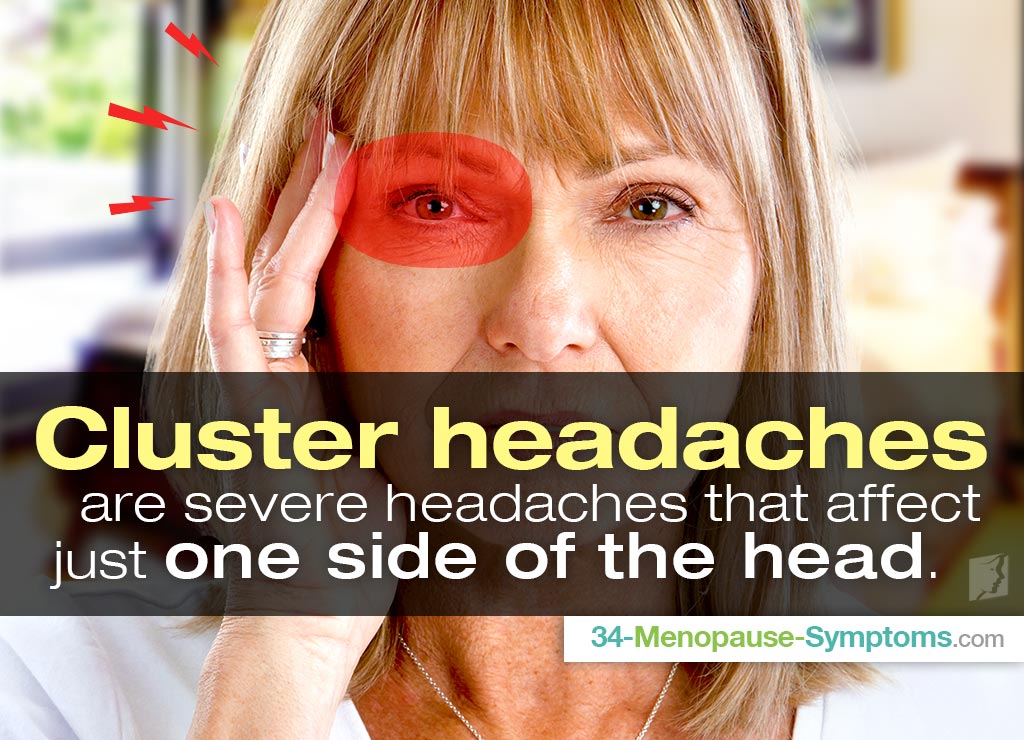Cluster headaches are fortunately a rare disorder - thought to affect no more than two people in every thousand. They are an extremely painful and difficult condition, which sufferers must generally contend with for many years. In spite of the fact that they do not affect a vast number of women, it can be useful to familiarize yourself with the condition, so that you are prepared if it should ever arise in yourself or a loved one.
What Are Cluster Headaches?
Cluster headaches are extremely severe headaches that affect just one side of the head - with pain frequently reaching to around the eye. In some women, the side of the head changes, but generally they stay in one area. The pain can last anything from about 15 minutes to an hour, and the nature of the condition is such that the headaches will repeat themselves over a short period of time. Sometimes, they will reoccur every other day, but it is also possible for headaches to arise up to eight times in one day during a particularly bad episode.
What Are the Causes of a Cluster Headache?
The distinct cluster headache causes still puzzle doctors and scientists, but they are thought to have to do with the hypothalamus - a portion of the brain that influences the nervous system; affecting body temperature, hunger, sleep, and heart rate among others. While it not yet understood how, many sufferers find that the following are triggers for cluster headaches:
Excessive smoking. It is known to be of significant importance because it has been shown that heavy smokers are prone to this condition.
Strong smells such as perfume or fuel
Alcohol
Extreme heat
Are There Other Cluster Headache Symptoms?
In addition to severe pain, cluster headaches can also present various other symptoms. The most common of these include:
Runny or blocked nose
Watering, red eye
Swollen eyelid
Sweating
The spell of headaches themselves can be specifically characterized by the pattern of their existence. They are usually a yearly incident, occurring around the same time annually - research has shown this is often during spring or autumn - and lasting between four and twelve weeks.
What Are Some Cluster Headache Treatments?
Treating cluster headaches is a problematic affair, pertaining to the fact that pain can come on very intensely very quickly. For this reason, over-the-counter pain killing medication such as Tylenol or paracetamol is ineffective. Sufferers of cluster headaches should visit their doctor in order to gain advice and adequate pain relief. This might be:
Sumatripan. This is available in a nasal spray or injection, and has been specifically developed for the purpose of relieving migraines and cluster headaches. It works by narrowing the blood vessels in the head.
Oxygen therapy. This is very effective for quick pain relief, often used by women during labor. It involves the inhalation of pure oxygen through a face mask, and might be prescribed if you experience frequent cluster headaches.
Transcutaneous vagus nerve stimulation (TVNS). This involves holding a small, portable electricity pack against your neck and increasing the strength of the electrical current until small muscle contractions occur. It is effective for relieving pain in some.
Hopefully you will never have to encounter this difficult condition, which is professed to be more painful than childbirth in extreme cases. However, knowing some more about it can be useful in order to better prepare yourself should you ever be exposed to it. Read more about other types of headaches.
Sources
- National Health Service UK. (2017). Cluster headaches. Retrieved June 14, 2017, from http://www.nhs.uk/conditions/cluster-headaches/Pages/Introduction.aspx
- The Migraine Trust. (n.d). Cluster headache. Retrieved June 14, 2017, from https://www.migrainetrust.org/about-migraine/types-of-migraine/other-headache-disorders/cluster-headache/
- Medline Plus. (2015). Hypothalamus. Retrieved June 14, 2017, from https://medlineplus.gov/ency/article/002380.htm




